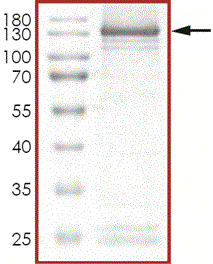
DDB1 Protein
Recombinant full-length human DDB1 was expressed by baculovirus in Sf9 insect cells using n N-terminal GST tag.
Catalog No. D55-30G
| Catalog No. | Pack Size | Price (USD) | |
|---|---|---|---|
| D55-30G-20 | 20 ug | $215 | |
| D55-30G-50 | 50 ug | $435 | |
| D55-30G-BULK | BULK | Contact Us |

 DPYSL2 Protein, D470-30BG
DPYSL2 Protein, D470-30BG

 Toll Free: 1-866-954-6273
Toll Free: 1-866-954-6273 info@signalchem.com
info@signalchem.com